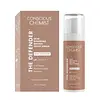What's inside
What's inside
 Key Ingredients
Key Ingredients

 Benefits
Benefits

 Concerns
Concerns

 Ingredients Side-by-side
Ingredients Side-by-side

Water
Skin ConditioningNiacinamide
SmoothingTranexamic Acid
AstringentKojic Acid
AntioxidantCetearyl Alcohol
EmollientDicetyl Phosphate
EmulsifyingCeteth-10 Phosphate
CleansingC12-15 Alkyl Benzoate
AntimicrobialAzelaic Acid
BufferingPolyglutamic Acid
Skin ConditioningBetaine
HumectantTrehalose
HumectantTrimethylolpropane Tricaprylate/Tricaprate
EmollientHydrolyzed Milk Protein
Skin ConditioningPhenylalanine
MaskingPantothenic Acid
Skin ConditioningAllantoin
Skin ConditioningOenothera Biennis Oil
EmollientSodium Lactate
BufferingMorus Alba Leaf Extract
Skin ConditioningHyaluronic Acid
HumectantStomach Extract
HumectantGlycyrrhiza Glabra Root Extract
BleachingPhenoxyethanol
PreservativeXanthan Gum
EmulsifyingBenzyl Alcohol
PerfumingGlyceryl Laurate
EmollientZea Mays Oil
EmulsifyingWater, Niacinamide, Tranexamic Acid, Kojic Acid, Cetearyl Alcohol, Dicetyl Phosphate, Ceteth-10 Phosphate, C12-15 Alkyl Benzoate, Azelaic Acid, Polyglutamic Acid, Betaine, Trehalose, Trimethylolpropane Tricaprylate/Tricaprate, Hydrolyzed Milk Protein, Phenylalanine, Pantothenic Acid, Allantoin, Oenothera Biennis Oil, Sodium Lactate, Morus Alba Leaf Extract, Hyaluronic Acid, Stomach Extract, Glycyrrhiza Glabra Root Extract, Phenoxyethanol, Xanthan Gum, Benzyl Alcohol, Glyceryl Laurate, Zea Mays Oil
Water
Skin ConditioningCentella Asiatica Extract
CleansingGlycerin
HumectantLecithin
EmollientHelianthus Annuus Seed Oil
EmollientAlcohol
AntimicrobialTocopherol
AntioxidantTrehalose
HumectantPhenoxyethanol
PreservativeCarbomer
Emulsion StabilisingRetinol
Skin ConditioningPolysorbate 20
EmulsifyingBHA
AntioxidantBHT
AntioxidantPanthenol
Skin ConditioningSodium PCA
HumectantSodium Lactate
BufferingArginine
MaskingAspartic Acid
MaskingPCA
HumectantGlycine
BufferingAlanine
MaskingSerine
MaskingValine
MaskingProline
Skin ConditioningThreonine
Isoleucine
Skin ConditioningHistidine
HumectantPhenylalanine
MaskingAcetyl Hexapeptide-8
HumectantCopper Tripeptide-1
Skin ConditioningPalmitoyl Pentapeptide-4
Skin ConditioningTripeptide-1
Skin ConditioningHexapeptide-9
Skin ConditioningPalmitoyl Tripeptide-1
Skin ConditioningPolyglyceryl-10 Laurate
Skin ConditioningButylene Glycol
Humectant1,2-Hexanediol
Skin ConditioningPrunus Armeniaca Bud Extract
Skin ConditioningSodium Hyaluronate
HumectantSaccharide Isomerate
HumectantCitric Acid
BufferingSodium Citrate
BufferingWater, Centella Asiatica Extract, Glycerin, Lecithin, Helianthus Annuus Seed Oil, Alcohol, Tocopherol, Trehalose, Phenoxyethanol, Carbomer, Retinol, Polysorbate 20, BHA, BHT, Panthenol, Sodium PCA, Sodium Lactate, Arginine, Aspartic Acid, PCA, Glycine, Alanine, Serine, Valine, Proline, Threonine, Isoleucine, Histidine, Phenylalanine, Acetyl Hexapeptide-8, Copper Tripeptide-1, Palmitoyl Pentapeptide-4, Tripeptide-1, Hexapeptide-9, Palmitoyl Tripeptide-1, Polyglyceryl-10 Laurate, Butylene Glycol, 1,2-Hexanediol, Prunus Armeniaca Bud Extract, Sodium Hyaluronate, Saccharide Isomerate, Citric Acid, Sodium Citrate
 Reviews
Reviews

Ingredients Explained
These ingredients are found in both products.
Ingredients higher up in an ingredient list are typically present in a larger amount.
Phenoxyethanol is a preservative that has germicide, antimicrobial, and aromatic properties. Studies show that phenoxyethanol can prevent microbial growth. By itself, it has a scent that is similar to that of a rose.
It's often used in formulations along with Caprylyl Glycol to preserve the shelf life of products.
Phenylalanine is an amino acid. It is a skin soothing and hydrating ingredient. Amino acids play a crucial role in wound healing and skin hydration.
This ingredient is also used to help even out skin tone due to its ability to disrupt the melanin production process.
Two structures of phenylalanine exist: L-phenylalanine and D-phenylalanine. L-phenylalanine is essential, this means our bodies cannot produce it naturally and we must get it from foods. Our bodies convert D-phenylalanine to neurotransmitters, and D-phenylalanine is found in our bodies naturally.
Some foods that contain L-phenylalanine include eggs, soybeans, beef, milk.
Learn more about PhenylalanineSodium Lactate is the sodium salt of lactic acid, an AHA. It is a humectant and sometimes used to adjust the pH of a product.
This ingredient is part of our skin's NMF, or natural moisturizing factor. Our NMF is essential for the hydration of our top skin layers and plasticity of skin. NMF also influences our skin's natural acid mantle and pH, which protects our skin from harmful bacteria.
High percentages of Sodium Lactate can have an exfoliating effect.
Fun fact: Sodium Lactate is produced from fermented sugar.
Learn more about Sodium LactateTrehalose is a disaccharide made of two glucose molecules (glucose is sugar!). Trehalose is used to help moisturize skin. It also has antioxidant properties.
As a humectant, trehalose helps draw moisture from the air to your skin. This helps keep your skin hydrated.
Due to its antioxidant properties, trehalose may help with signs of aging. Antioxidants help fight free-radical molecules, unstable molecules that may damage your skin.
In medicine, trehalose and hyaluronic acid are used to help treat dry eyes.
Some animals, plants, and bacteria create trehalose as a source of energy to survive freeze or lack of water.
Learn more about TrehaloseWater. It's the most common cosmetic ingredient of all. You'll usually see it at the top of ingredient lists, meaning that it makes up the largest part of the product.
So why is it so popular? Water most often acts as a solvent - this means that it helps dissolve other ingredients into the formulation.
You'll also recognize water as that liquid we all need to stay alive. If you see this, drink a glass of water. Stay hydrated!
Learn more about Water